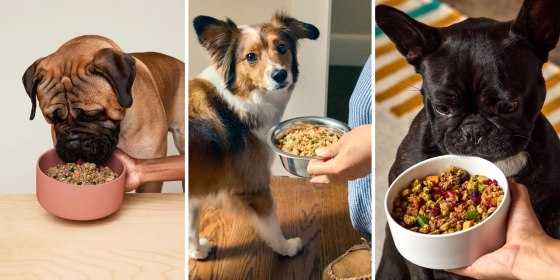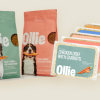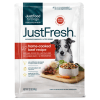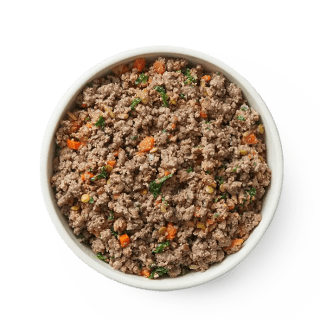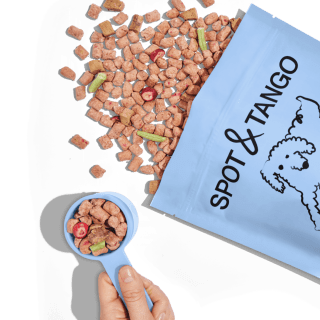Pet owners want the very best for their dogs, especially when it comes to their diet. Fresh dog food, which typically needs to be frozen or refrigerated, can be a great alternative to standard kibble and canned wet foods, according to the vets I spoke to. But is fresh dog food actually better for your dog? The answer depends on a few different factors, including your dog’s lifestyle, any allergies or preferences they have and your budget.
I spoke to veterinarians to better understand the claims and promises surrounding fresh dog food and whether it’s worth switching your dog’s diet. I also gathered their recommendations for fresh dog food brands to consider, as well as options that NBC Select staffers feed their own dogs.
How I picked the best fresh dog food
When shopping for the best fresh dog food, experts recommend keeping in mind the following factors:
- Meets AAFCO standards: The most important thing to look for when shopping for pet food in general is whether it’s approved by the Association of American Feed Control Officials (AAFCO), which means an independent lab has tested the food to guarantee safety. “If the food is not AAFCO approved, this can mean that testing was only done internally, and no regulating body performed a secondary confirmatory test,” says Dr. Miriam Fink, Medical Director at Bond Vet.
- Your dog’s specific needs: As with every type of dog food, it’s important to understand your dog’s specific nutritional needs before buying. Consider their age, breed, activity level, allergies and any health conditions they may have. Always look at the brand’s packaging and/or website for a guide that indicates how much food your pet needs daily based on their weight and age. You can also check out Balance It, which is run by board-certified veterinary nutritionists and gives detailed information about your dog’s diet.
- Storage: Fresh dog food is usually refrigerated or frozen, which means you’ll need to make sure you have enough space to properly store it. Most brands will state exactly how to store and thaw frozen food and how long it’ll last in your fridge or freezer.
- Price: Expect fresh dog food to be more expensive than typical store-bought kibble or canned food. Most fresh dog food brands are delivery services, which means cost will be higher due to convenience.
Want more from NBC Select? Sign up for our newsletter, The Selection, and shop smarter.
Best fresh dog food of 2025
Best overall: Ollie
- Customizable plans
- Both fresh and dry options
- Resealable packaging
- Nothing to note at this time
Ollie’s fresh food is made alongside veterinary nutritionists who help create balanced, human-grade recipes that meet AAFCO standards (more on human-grade dog food below). Plus, it delivers meals right to your door on a regular schedule. NBC Select senior manager of commerce analytics Amanda Smith feeds Ollie to her picky, 3-year-old rat terrier Mac and says it’s been a “game changer” for his diet. “He’s never been very food motivated and suddenly he’s begging for meal time,” she says.
Smith says the process from start to finish took only a few minutes. First, you’ll need to take a short quiz about your dog’s current weight, ideal weight, spay/neuter status and activity level. You can choose between three plans: full fresh (pouches that include real meat, fruits, veggies and grains), mixed (half portion of Ollie’s fresh food and half of Ollie’s dry food) and half fresh (half portion of Ollie’s fresh food to mix with your dog’s typical food). Here’s a cost breakdown for each plan:
- Full fresh: $22 per week (small dogs), $55 per week (medium dogs), $69 per week (large dogs)
- Mixed bowl: $19 per week (small dogs), $45 per week (medium dogs), $59 per week (large dogs)
- Half fresh: $15 per week (small dogs), $38 per week (medium dogs), $41 per week (large dogs)
You can choose from up to five fresh recipes, including pork, chicken, beef, lamb and turkey. Store your fresh food in the freezer and defrost it in the fridge at least 24 hours before your pup’s mealtime, according to the brand. If your dog isn’t ready to start an all-fresh meal, Ollie also has kibble options that you can add to your meal plan and mix with the fresh food. Ollie also has treats and supplements to add to your shipment.
Number of recipes: 5 | Cost per day: $4 | Shipping cost: free | Trial: 2-week starter box
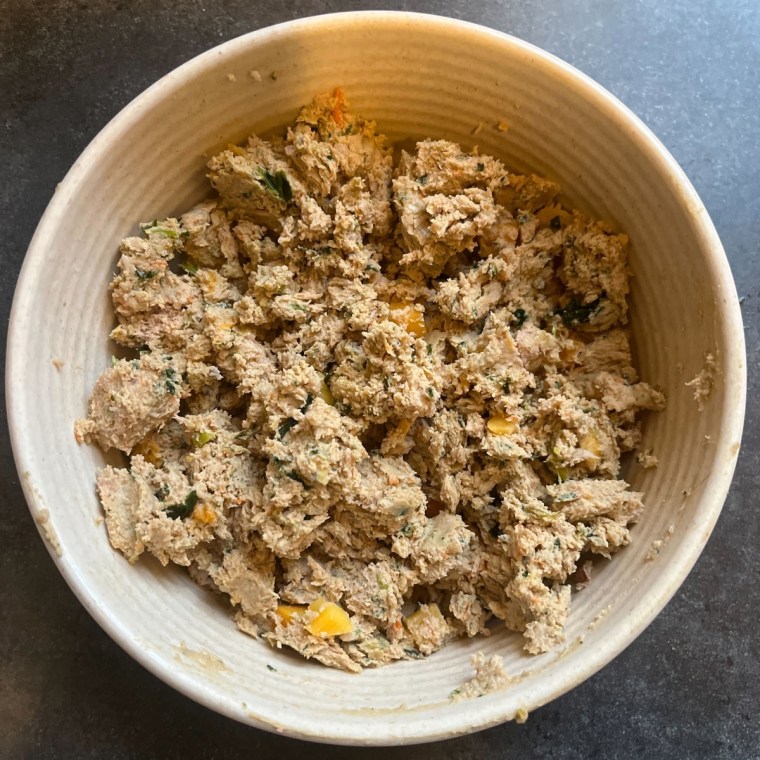
Best with single-source protein: JustFoodForDogs
- Several meal plans
- Less calories
- Resealable packaging
- Nothing to note at this time
Dr. Abel Gonzalez, a veterinarian and the clinical director at Dutch, a pet telehealth company, recommends JustFoodForDogs due to its high-protein food with a lower calorie count, which makes it great for older or less active dogs. It has more than a dozen recipes, all of which have one source of protein for a limited ingredients diet, including turkey, venison and lamb.
You can choose between four main categories: Fresh Frozen, JustFresh (comes in resealable packaging), PantryFresh (shelf stable) and DIY Homemade (includes a recipe, but you’ll need to supply the ingredients). My 7-year-old havanese and bichon frise mix, Bella, is obsessed with the brand’s JustFresh recipes. I mix a spoonful with her regular kibble once a day and I can tell she likes it much more than her canned wet food — she’s always begging for food once meal time comes around. Each JustFresh meal comes in a handy resealable pouch and one package lasts me about a week at the rate I’m feeding her.
I’ve also recently started incorporating the Fresh Frozen meals to Bella’s diet (I alternate them with the JustFresh meals). I love that the Fresh Frozen options come in a ton of flavors to give Bella a good amount of variety, and it lasts up to 18 months in the freezer, so I’m always stocked up. When thawed, the meals stay fresh in the original package for up to seven days (five days after opening the packaging). You can purchase pouches individually or choose to autoship your dog’s food, which will ship to your home at the frequency you choose (anywhere between one- and 12-week intervals, and your order ships within three to five business days).
Number of recipes: 25 | Cost per day: $2 | Shipping cost: $19.99 or free on order over $99 for frozen meals or $49 for dry/non-frozen | Trial: n/a
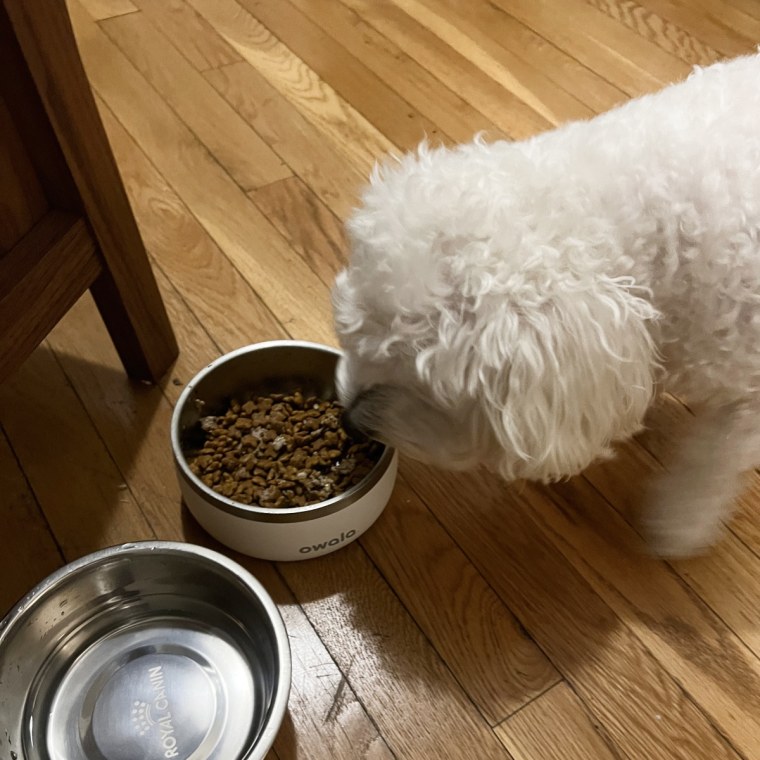
Best budget-friendly: The Farmer’s Dog
- Personalized plan
- Extensive questionnaire
- May require transition period
This subscription-based service delivers fresh dog food to your door. Before you place an order, you’ll fill out a questionnaire that helps the brand determine a meal plan that best fits your dog’s nutritional needs. Each meal then comes pre-portioned for your dog’s needs based on their age, weight, breed, activity level and build.
You can store The Farmer’s Dog pouches in your fridge or freezer, and each one lasts up to four days in the fridge after you thaw it, according to the brand. It’s a favorite of former NBC Select social editor Sadhana Daruvuri, who feeds this service to her 3-year-old maltese and poodle mix, Bandit. “I knew friends who tried it and their dogs were all big fans, so I did a trial with Bandit and it was obvious he liked it way more than his kibble,” she says. (Bandit typically eats the turkey, beef and chicken meals.) Plan pricing varies based on your dog’s weight, breed, activity level and more.
Number of recipes: 4 | Cost per day: starts at $2 | Shipping cost: free | Trial: 2-week starter box
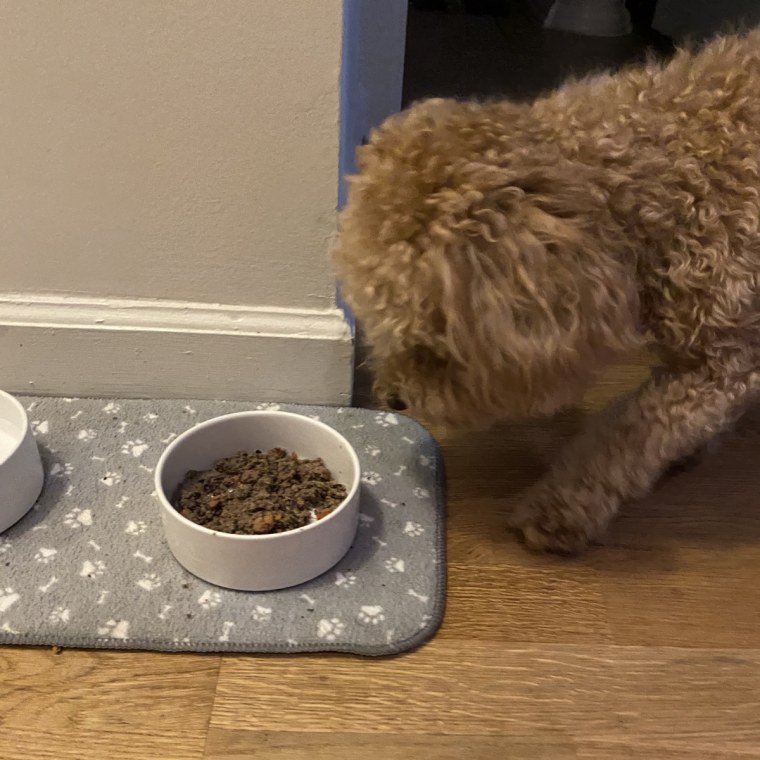
Best for sensitive skin and stomach: Nom Nom
- Extensive questionnaire
- Pre-portioned meals
- Good for specific concerns
- Can be expensive
- Not as many recipes
Nom Nom creates a fresh meal plan based on your dog’s health and nutritional goals, including weight management, stomach issues and skin sensitivities. You’ll fill out a questionnaire about your dog’s breed, weight, age and diet-related issues (including whether they’re a picky eater or have food allergies), and Nom Nom will recommend the recipe that best fits their needs. All meals are pre-portioned for each dog’s unique caloric needs and you can select up to four recipes for each shipment.
If you’re on the fence about which recipes to get, you can purchase a sampler pack of four recipes (beef, chicken, turkey and pork). All meals come frozen, and you can store them in the fridge for up to 5 days and in the freezer for up to 6 months, according to the brand.
Number of recipes: 4 | Cost per day: $4 | Shipping cost: free | Trial: 2-week starter box
Best variety: PetPlate
- Great for allergies
- Pre-portioned meals
- Surcharge for some proteins
Petplate will create a custom meal plan for your pet based on a short quiz. Each meal is also perfectly portioned for your pup to ensure they get the right amount of nutrients. Best of all, you can mix-and-match recipes in your dog’s meal plan, so you aren’t limited to only certain recipes (pricing will change based on which protein you choose; for example, venison and lamb are slightly more expensive).
The brand has four main plans: FreshBaked (shelf-stable with a crunch), FreshCombo (a mix of baked and cooked textures), FreshCooked (signature cooked plan) and Toppers (signature plan offered in smaller portions). There are two FreshBaked recipes to choose from (beef and chicken), and six FreshCooked recipes, including turkey, venison, lamb and pork.
Number of recipes: 6 fresh recipes, 2 baked recipes | Cost per day: starts at $1.43 | Shipping cost: free | Trial: n/a
Best with whole ingredients: Spot & Tango
- Both dry and fresh food
- Snacks available
- Can be expensive
Spot & Tango’s fresh recipes are cooked in small batches and delivered in pouches. Fresh recipes include turkey and quinoa, beef and brown rice, and lamb and sweet potato. You’ll first need to complete an initial questionnaire that asks about your dog’s weight, age, breed, activity level and any health issues, which the brand uses to determine your pup’s ideal meal plan and caloric intake. Spot & Tango also has its own version of kibble, called Unkibble, that’s made up of a dehydrated meat, starch, fruit and veggies and doesn’t have any preservatives, fillers or additives, according to the brand. You can add snacks, including turkey strips and cheese bites, to your delivery for an additional fee, too.
Number of recipes: 7 | Cost per day: starts at $2 | Shipping cost: free | Trial: 2-week starter box
Meet our experts
At NBC Select, we work with experts who have specialized knowledge and authority based on relevant training and/or experience. We also take steps to ensure all expert advice and recommendations are made independently and without undisclosed financial conflicts of interest.
- Dr. Miriam Fink is the medical director at Bond Vet.
- Dr. Abel Gonzalez is a veterinarian and the clinical director at Dutch, a pet telehealth company.
- Dr. Nicole Savageau is a board-certified veterinarian at The Vets, a mobile veterinary service.
Why trust NBC Select?
I am an updates editor at NBC Select who has written about pets and dog food for over five years. For this article, I spoke to board-certified veterinarians about how to shop for fresh dog food and researched dozens of options on the market to recommend the best ones to shop.
Catch up on NBC Select’s in-depth coverage of tech and tools, wellness and more, and follow us on Facebook, Instagram, Twitter and TikTok to stay up to date.
